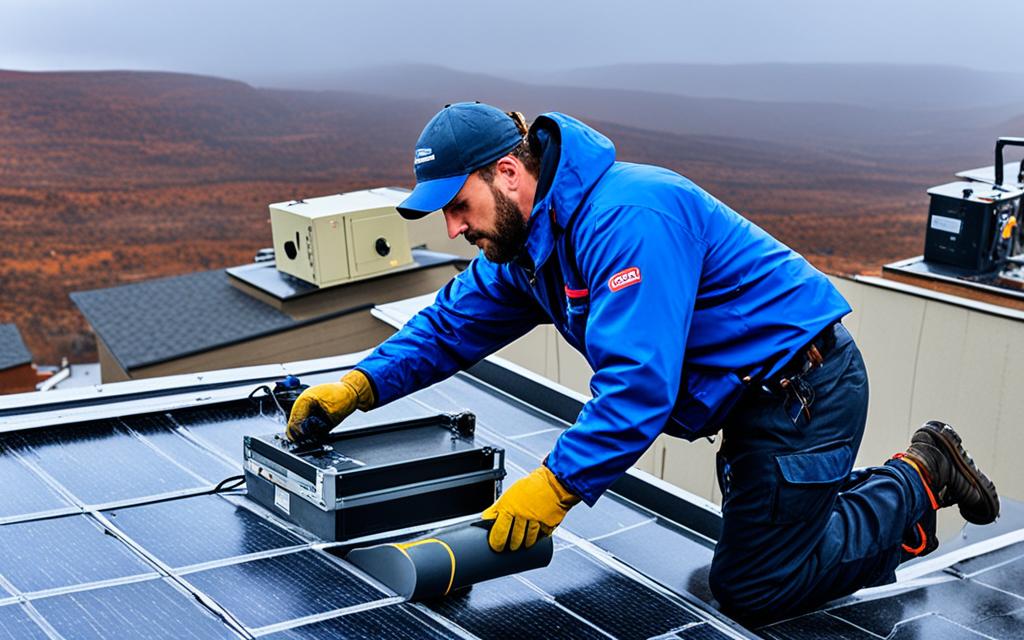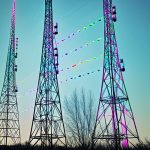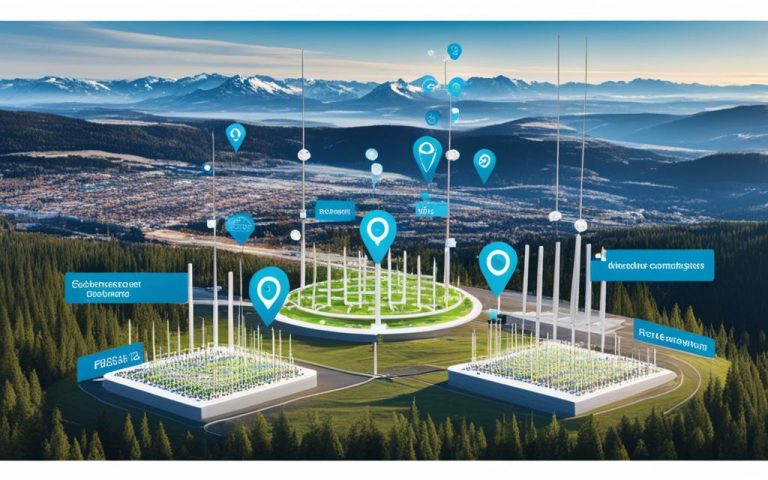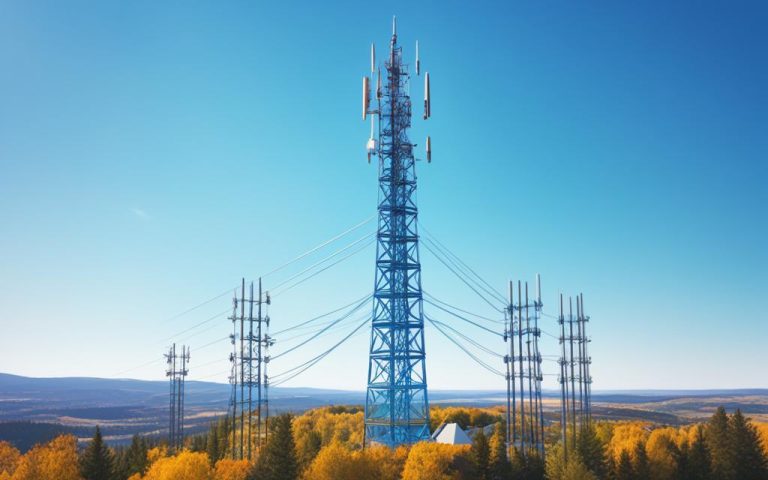Fixed Wireless Access (FWA) has gained momentum with the introduction of 5G, but it still faces hurdles. FWA deployments have increased, especially with the advent of 5G, but there are limitations. The use of mid-band spectrum results in limited bandwidth, while mmWave frequencies have a shorter range. Despite these challenges, FWA is expected to see significant growth, particularly in emerging markets with limited wired infrastructure. However, the high cost of Customer Premises Equipment (CPE) and the availability of suitable spectrum are additional factors that impact FWA deployment.
In this article, we will explore the challenges of deploying fixed wireless networks and discuss strategies for optimizing network performance. From overcoming installation obstacles to managing network capacity, we will provide insights on achieving optimal performance in fixed wireless access. Whether you are a network operator, a business looking to deploy FWA, or an individual interested in understanding the technology, this article aims to provide valuable information to guide you in your FWA journey.
The Promise of Fixed Wireless Access (FWA)
Fixed Wireless Access (FWA) is a wireless technology that provides high-speed internet connectivity to homes and businesses without the need for physical wired connections. It is particularly suitable for suburban and rural areas that lack traditional broadband infrastructure.
FWA operates through minimal infrastructure, requiring users to install a small antenna to receive signals. It offers a cost-effective alternative to wired broadband, providing stable connections with strong bandwidth and high speeds.
“FWA allows users in suburban and rural areas to access high-speed internet connectivity without the limitations of wired connections or extensive infrastructure.”
By bridging the digital gap between urban and rural communities, FWA has the potential to connect underserved areas and promote economic growth. It enables businesses to thrive, students to access online education resources, and individuals to enjoy seamless internet access for various needs.
Fixed Wireless Access offers numerous advantages, including:
- High-speed internet connectivity for suburban and rural areas
- Cost-effective alternative to wired broadband
- Easy installation process with minimal infrastructure
- Stable connections with strong bandwidth and high speeds
- Promotion of economic growth and development in underserved areas
FWA’s ability to provide reliable high-speed internet connectivity without the limitations of wired connections makes it an attractive option for individuals and businesses in suburban and rural areas.
https://www.youtube.com/watch?v=DGOPESpU64A
Comparing Fixed Wireless Access to Other Technologies:
| Fixed Wireless Access | Wired Broadband | |
|---|---|---|
| Technology | Wireless | Physical connections through cables |
| Coverage | Suburban and rural areas | Urban and suburban areas with existing infrastructure |
| Installation | Minimal infrastructure and easy antenna installation | Extensive physical connections, trenching, and underground cabling |
| Cost | Cost-effective alternative | Higher investment in infrastructure |
| Performance | Stable connections with strong bandwidth and high speeds | Potential for interference and network congestion |
The Difference Between Wired and Fixed Wireless Broadband Access
When it comes to internet access, there are two distinct options: wired broadband and fixed wireless broadband. While both provide fast internet connectivity, they differ in terms of the technology used to transmit signals.
Wired broadband relies on physical connections such as fiber optic cables, telephone lines, and powerlines to transmit data. These physical connections can sometimes face interference and network congestion, leading to performance issues and slower internet speeds.
On the other hand, fixed wireless broadband utilizes wireless signals transmitted through the air to establish an internet connection. Instead of relying on physical infrastructure, fixed wireless access requires users to install a small antenna that receives wireless signals. As long as the equipment is properly placed and there are no obstructions, fixed wireless broadband can maintain stable connections with fast internet speeds.
Fixed wireless broadband offers comparable speeds to wired broadband at a fraction of the cost. This makes it an attractive option for areas where laying physical cables is impractical or expensive, such as rural or remote locations. By leveraging wireless signals, fixed wireless access can bridge the digital divide and provide fast internet connectivity to underserved areas.
Benefits of Fixed Wireless Broadband:
- Cost-effective alternative to traditional wired broadband
- Stable connections with fast internet speeds
- Ability to connect underserved areas without extensive infrastructure
- Flexibility for scalability and rapid deployment
- Reliable performance as long as there are no obstructions
Drawbacks of Wired Broadband:
- Potential for interference and network congestion
- Reliance on physical connections that can be damaged or disrupted
- Higher costs associated with installation and maintenance
- May not be available in rural or remote areas
- Can require extensive infrastructure development
“Fixed wireless broadband offers a cost-effective alternative to traditional wired broadband while delivering comparable speeds and stable connections. This wireless technology has the potential to connect underserved areas and bridge the digital divide, providing fast internet access to those who need it the most.”
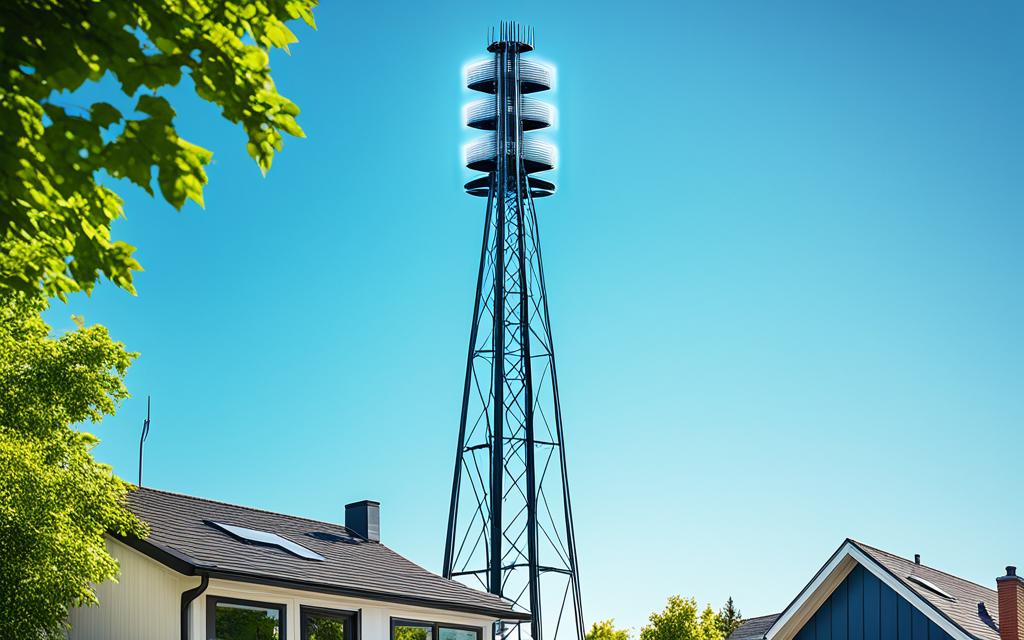
As technology continues to advance, both wired and fixed wireless broadband have their place in the ever-connected world. The choice between the two depends on factors such as location, infrastructure availability, and budget. However, fixed wireless broadband stands out as a reliable and cost-effective option, offering fast internet speeds without the need for extensive physical connections.
How Fixed Wireless Access is Deployed
Fixed Wireless Access (FWA) deployment follows a strategic process to establish reliable and efficient connectivity. By understanding the key components and their interactions, FWA providers can ensure seamless deployment and optimal performance.
The deployment of FWA begins with a base station connected to the fixed wireless network. The base station acts as the central hub, distributing radio frequencies to fixed wireless nodes deployed strategically in towers. These nodes, such as the FW-300i, provide 360-degree coverage, enabling a wide-reaching signal distribution.
The fixed wireless nodes then transmit radio signals to antennas or devices installed at the customer’s premises, establishing the final connection. This strategic node deployment ensures that line of sight is not a limiting factor, enhancing the reach and effectiveness of the FWA network. Unlike wired broadband, FWA does not rely on extensive physical infrastructure, making it quicker and easier to install.
Key Components of Fixed Wireless Access Deployment:
- Base Station: The central hub that distributes radio frequencies to the fixed wireless nodes.
- Fixed Wireless Nodes: Devices deployed in towers that provide 360-degree coverage and transmit radio signals to antennas or devices.
- Antennas/Devices: Installed at the customer’s premises to receive and establish the final connection.
This streamlined deployment process allows FWA providers to rapidly establish connectivity in areas with limited wired infrastructure or to quickly expand networks to accommodate growing demand. By leveraging the advantages of FWA and strategic node placement, reliable and high-speed internet access can be delivered to previously underserved communities.
Eliminating Physical Infrastructure in FWA Deployment
One of the advantages of fixed wireless access (FWA) is its ability to bypass the need for extensive physical infrastructure. Traditional wired connections, such as fiber optic cables, require significant investments in trenching and underground cabling. In contrast, FWA relies on wireless signals transmitted between towers or base stations and receivers installed at customer premises. This eliminates the need for extensive physical connections and allows for instant deployment, saving time and resources.
| Infrastructure Type | Installation Process | Cost | Time Required |
|---|---|---|---|
| Fixed Wireless Access (FWA) | Installation of towers or base stations to transmit wireless signals to customer premises | Cost-effective, minimal investment required | Instant deployment, no need for extensive physical connections |
| Wired Connections | Trenching, laying fiber optic cables or other physical connections | Significant investments in infrastructure and materials | Time-consuming process, requires extensive physical connections |
With FWA, the deployment process becomes more streamlined and cost-effective. Instead of relying on physical infrastructure, FWA leverages wireless signals to establish connections, eliminating the need for costly and time-consuming trenching or cable laying. This not only reduces the upfront investment required but also speeds up the deployment process, enabling faster connectivity for customers.
Strategies for Managing Network Capacity in FWA
Managing network capacity is crucial in fixed wireless access (FWA) networks to effectively handle the high data demands of FWA subscribers. Capacity planning and management play a vital role in ensuring a seamless and reliable user experience. By understanding the available cell capacity, network operators can optimize performance and accommodate new subscribers without compromising on quality.
Capacity Planning and Management
Capacity planning involves assessing the current network capacity and forecasting future growth to determine the optimal number of users the FWA network can support. By strategically planning for additional capacity, operators can avoid congestion and ensure consistent speeds and performance.
- Regular capacity assessments and upgrades based on subscriber demands
- Proactive monitoring to identify potential capacity bottlenecks
- Implementing predictive analytics to anticipate network usage patterns
Deployment of Advanced FWA Devices
Utilizing advanced FWA devices equipped with high-gain antennas and support for carrier aggregation is essential for optimizing spectrum utilization and enhancing signal strength. These devices can significantly improve network efficiency and provide a better user experience.
“The deployment of advanced devices with advanced antenna systems significantly improves spectrum utilization, achieving higher capacity and network efficiency.” – FWA Network Expert
Proper Device Placement
The strategic placement of FWA devices within customer premises plays a crucial role in maximizing network efficiency. By ensuring optimal device positioning and minimal obstructions, network performance can be greatly enhanced.
- Identifying optimal locations for FWA devices based on signal strength
- Minimizing obstructions such as walls, furniture, and other electronic devices
Strategic Spectrum Utilization
Efficient spectrum utilization is key to addressing capacity limitations in FWA networks. By strategically leveraging different bands, including mmWave, operators can optimize network capacity and ensure high-speed connectivity even in densely populated areas.
| Spectrum Band | Advantages |
|---|---|
| Sub-6 GHz |
|
| mmWave |
|
Strategic spectrum allocation allows for efficient utilization of available resources, ensuring optimal network performance and capacity.
By implementing these strategies for managing network capacity in FWA, operators can meet the growing demand for high-speed internet connectivity and deliver an exceptional broadband experience to FWA subscribers.
Leveraging 5G and FWA for Enhanced Connectivity
Integration of 5G technology into fixed wireless access (FWA) systems brings about a new era of enhanced connectivity, network performance, and user experience. With its high-speed and low-latency capabilities, 5G significantly boosts FWA’s capacity to support speeds exceeding 100 Mbps, revolutionizing the way we connect to the internet.
However, as FWA adoption increases and data demands soar, it can strain network resources. To ensure optimal performance and manage the capacity crunch, strategic network planning, advanced device deployment, and efficient spectrum utilization are imperative.
One key aspect of leveraging 5G and FWA is the careful balance of spectrum resources between mobile services and FWA. By optimizing the allocation and utilization of spectrum, network operators can ensure a seamless user experience and foster the sustainable growth of FWA as a vital player in global internet connectivity.
Strategic Network Planning
To harness the full potential of 5G and FWA, meticulous network planning is essential. Operators must strategically deploy fixed wireless nodes and base stations to maximize coverage and minimize interference. By carefully selecting locations and optimizing the arrangement of network infrastructure, operators can ensure reliable connectivity and improved network performance.
Advanced Device Deployment
The integration of advanced FWA devices plays a crucial role in unleashing the power of 5G. High-gain antennas, carrier aggregation support, and other cutting-edge technologies improve signal strength, enhance network capacity, and enable faster data transmission. Deploying these devices at customer premises ensures a seamless user experience, delivering high-speed internet connectivity to homes and businesses.
Efficient Spectrum Utilization
Efficient spectrum utilization is a key factor in harnessing the benefits of 5G and FWA. Spectrum resources need to be strategically allocated to meet the demands of both FWA and mobile services. Leveraging mmWave bands in densely populated areas and optimizing spectrum sharing enable operators to maximize network capacity, ensuring that users enjoy uninterrupted connectivity and exceptional network performance.
| Benefits of Leveraging 5G and FWA | Enhanced Connectivity | Improved Network Performance | Superior User Experience |
|---|---|---|---|
| High-speed internet access | ✓ | ✓ | ✓ |
| Low-latency communication | ✓ | ✓ | ✓ |
| Stronger network capacity | ✓ | ✓ | ✓ |
| Seamless streaming and gaming | ✓ | ✓ | ✓ |
By harnessing the power of 5G and FWA, operators can unlock the potential of enhanced connectivity, superior network performance, and a seamless user experience. Strategic network planning, advanced device deployment, and efficient spectrum utilization are all crucial elements in realizing the full benefits of this revolutionary combination. As the world becomes increasingly interconnected, the integration of 5G and FWA paves the way for a future where robust, high-speed internet connectivity is accessible to all.
Conclusion
Overcoming the challenges of fixed wireless installation and deployment is paramount to ensuring the successful deployment and optimal performance of fixed wireless networks. Despite the obstacles, fixed wireless access (FWA) presents a promising solution for connecting underserved areas and narrowing the digital divide.
Strategic planning plays a crucial role in FWA network deployment. Careful consideration of spectrum utilization and the strategic placement of nodes allows for efficient coverage and improved signal strength. Additionally, the use of advanced devices equipped with high-gain antennas and support for carrier aggregation maximizes network capacity, enabling faster and more reliable broadband connectivity.
As FWA adoption continues its upward trajectory, network operators must navigate the challenges posed by the capacity crunch. By implementing effective network management strategies and leveraging advanced technologies, such as 5G integration, operators can ensure optimal performance and deliver robust, high-speed internet connectivity to users worldwide.
FAQ
What are the challenges in installing and deploying fixed wireless networks?
Overcoming installation and deployment challenges in fixed wireless networks is crucial for successful network deployment and optimal performance. These challenges can include issues with signal strength, ensuring line of sight, and proper device placement. However, with strategic planning, advanced devices, and efficient spectrum utilization, operators can navigate these challenges and deliver robust, high-speed internet connectivity.
What is fixed wireless access (FWA) and who can benefit from it?
Fixed wireless access (FWA) is a wireless technology that provides high-speed internet connectivity to homes and businesses without the need for physical wired connections. It is particularly suitable for suburban and rural areas that lack traditional broadband infrastructure. FWA offers a cost-effective alternative to wired broadband, providing stable connections with strong bandwidth and high speeds. By bridging the digital gap between urban and rural communities, FWA has the potential to connect underserved areas and promote economic growth.
What is the difference between wired and fixed wireless broadband access?
Wired broadband uses physical connections such as fiber optic cables, telephone lines, and powerlines to transmit signals, while fixed wireless broadband uses wireless signals transmitted through the air. Wired connections can face interference and network congestion, resulting in performance issues. In contrast, fixed wireless access can maintain stable connections as long as the equipment is properly placed and there are no obstructions. Fixed wireless broadband offers comparable speeds to wired broadband at a fraction of the cost.
How is fixed wireless access (FWA) deployed?
Fixed wireless access (FWA) deployment starts with a base station connected to the fixed wireless network. The base station distributes radio frequencies to fixed wireless nodes, which are typically deployed in towers to provide 360-degree coverage. These nodes send radio signals to antennas or devices installed at the customer’s premises, establishing the connection. FWA providers strategically deploy nodes to ensure line of sight is not an issue. Unlike wired broadband, FWA does not require extensive physical infrastructure, making it quicker and easier to install.
How does fixed wireless access (FWA) eliminate the need for physical infrastructure?
One of the advantages of fixed wireless access (FWA) is its ability to bypass the need for extensive physical infrastructure. Traditional wired connections, such as fiber optic cables, require significant investments in trenching and underground cabling. In contrast, FWA relies on wireless signals transmitted between towers or base stations and receivers installed at customer premises. This eliminates the need for extensive physical connections and allows for instant deployment, saving time and resources.
How is network capacity managed in fixed wireless access (FWA) networks?
Managing network capacity is crucial in fixed wireless access (FWA) networks, especially to address the high data demands of FWA subscribers. Capacity planning and management involve understanding available cell capacity to effectively add new subscribers. The deployment of advanced FWA devices with high-gain antennas and support for carrier aggregation optimizes spectrum utilization and enhances signal strength. Proper device placement within customer premises can further improve network efficiency. Strategic spectrum utilization, including the use of mmWave bands in densely populated areas, helps address capacity limitations and ensures high-speed connectivity.
How does the integration of 5G technology enhance fixed wireless access (FWA) systems?
The integration of 5G technology into fixed wireless access (FWA) systems enhances network performance and user experience. 5G’s high-speed and low-latency capabilities significantly enhance FWA’s capacity to support speeds exceeding 100 Mbps. However, the rapid adoption of FWA and the high data demands can strain network resources. Strategic network planning, advanced device deployment, and efficient spectrum utilization are essential to maintain service levels and manage the capacity crunch. Balancing the use of spectrum resources between mobile services and FWA ensures optimal network performance and ultimately fosters the growth and sustainability of FWA as a key player in global internet connectivity.

